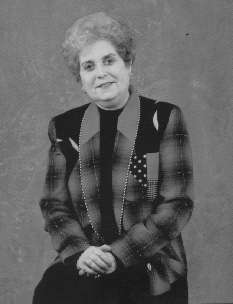
Spring/Summer 1999
Volume 6, Issue 2
Spring/Summer 1998
Volume
3, Issue 1
January 1995
Volume
2, Issue 4
October 1994
Volume
2, Issue 1
January 1994
Parallel Profile: Mary F. Wheeler
Noah Harding Professor, Computational and Applied Mathematics, Rice University
 "I really enjoy developing efficient and accurate solutions to real- world problems, while maintaining a solid theoretical base," she said. Inspired by her mentors Jim Douglas and Henry Rachford, the "fathers of modern reservoir engineering," Wheeler has helped to develop simulation programs that model fluid flow in petroleum reservoirs and groundwater aquifers. Her research interests include applied mathematics, numerical solution of partial differential equations (pde's), flow in porous media, and parallel computation. Wheeler's numerical work includes formulation, analysis, and implementation of finite-difference/finite- element discretization schemes for nonlinear coupled pde's as well as domain decomposition iterative solution methods.
"I really enjoy developing efficient and accurate solutions to real- world problems, while maintaining a solid theoretical base," she said. Inspired by her mentors Jim Douglas and Henry Rachford, the "fathers of modern reservoir engineering," Wheeler has helped to develop simulation programs that model fluid flow in petroleum reservoirs and groundwater aquifers. Her research interests include applied mathematics, numerical solution of partial differential equations (pde's), flow in porous media, and parallel computation. Wheeler's numerical work includes formulation, analysis, and implementation of finite-difference/finite- element discretization schemes for nonlinear coupled pde's as well as domain decomposition iterative solution methods.
Her current work has emphasized mixed finite-element methods for modeling reactive multi-phase flow and transport in heterogeneous porous media, with the goal of simulating these systems on parallel computing platforms. Through the CRPC and the Energy and Environmental Systems Institute at Rice University, Wheeler and her associates combine their different skills to work on geophysical problems that require interdisciplinary solutions.
For Wheeler, computational science effectively brings these different skills together. "Mathematics is the language of the sciences, helping to describe physical phenomena," she said. "Computationaurnal on Applied Mathematics. nd computer science to extend fundamental theories of physical, biological, and social sciences to describe complex and human systems. It couples theory and experimentation more tightly than has been possible in the past."
"Say, for instance, a physicist or a chemist formulates hypotheses to describe a particular phenomena. How are these hypotheses validated? Laboratory experiments are costly both in manpower and equipment and must be carried out in a controlled environment. It is also difficult to simultaneously vary many parameters. Verification requires repeating experiments and the processing of experimental data, which is also costly, both in time and manpower. Computational studies can build intuition and can be employed in the design of the experiment as well as in studying the sensitivity of the controlled parameters."
Wheeler also commented on major difficulties arising in modeling flow in porous media; namely, insufficient and inaccurate data and scaling laboratory microscopic mechanisms to the macroscopic field reservoir or aquifer.
The lithology of a porous media can only be crudely approximated. Permeability and porosity data are generally obtained from studies of geological outcrops, core samples, pressure well tests, and various seismic studies. Here the collected data is at several length scales, namely, pore scale data arising from core samples to the coarse grain variation from geophysics. Additional complexities arise from modeling chemical and biological processes. Kinetic parameters derived in laboratory experiments are not always applicable to field scale reservoirs or aquifers.
Geostatistics and conditional simulation employed in deterministic accurate numerical models with fine- grain discretizations are useful tools in studying scale-up procedures as well as in developing averaged or homogenized parameters. These simulations are computationally intensive and are presently being investigated by the Flow in Porous Media Advanced Computation Group that Wheeler heads.
Mary Wheeler has worked on oil recovery projects with researchers from the petroleum industry and the Center for Petroleum and Geosystems Engineering at the University of Texas. In addition she has collaborated with environmental scientists and engineers to model groundwater pollution migration and remediation at the Department of Energy Government Laboratories, Oak Ridge National Laboratory, and Batelle Pacific Northwest Laboratory.
Table of Contents